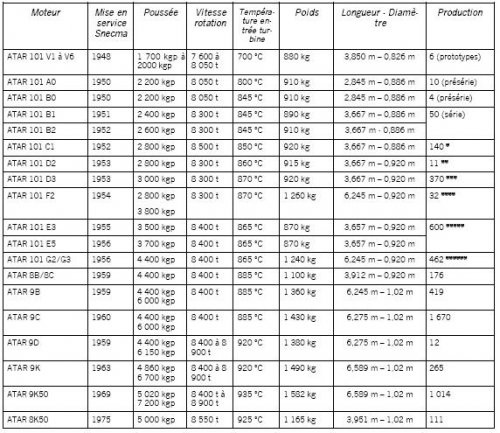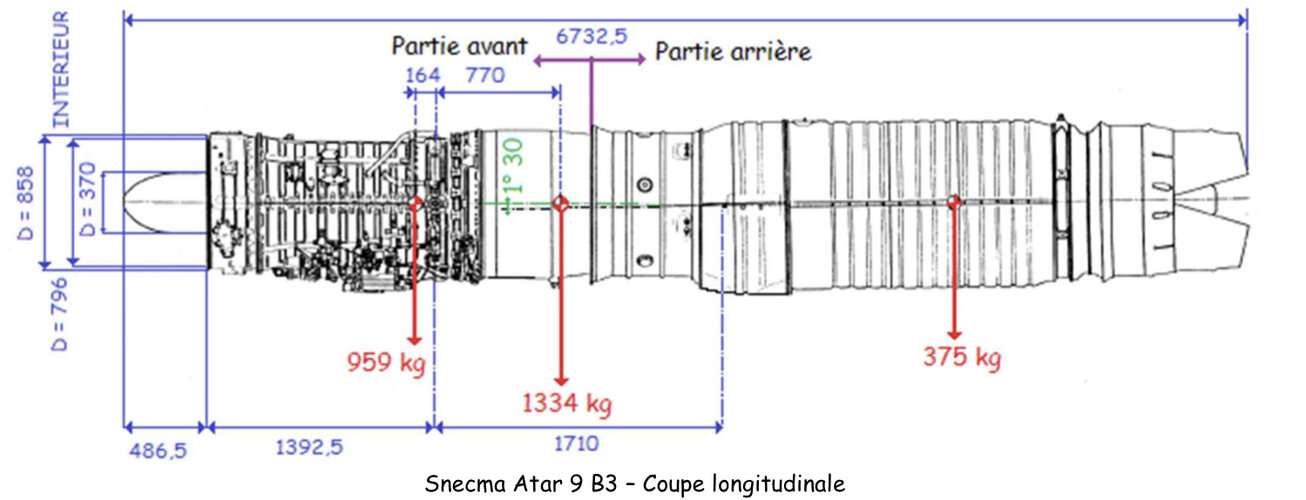SNECMA developed the Atar-101 ranging from 1700kgp to 4500kgp. Later, this engine evolved into the Atar-9 series (6000 to 7200 kgp)
But in paralel to that, SNECMA tried to create more powerful engines.
This were
- Atar-103 (3500 kgp)
- Atar-104 Vulcain (4500 kgp)
(both engines at a time when the Atar-101 had only 2000 kgp of thrust!)
- Super Atar (8000 to 12000 kgp)
The problem is : its all I know on this subject! so if someone knows more about these engines...
But in paralel to that, SNECMA tried to create more powerful engines.
This were
- Atar-103 (3500 kgp)
- Atar-104 Vulcain (4500 kgp)
(both engines at a time when the Atar-101 had only 2000 kgp of thrust!)
- Super Atar (8000 to 12000 kgp)
The problem is : its all I know on this subject! so if someone knows more about these engines...



